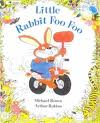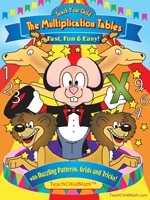
All the recent news articles, keep focusing on recruiting and retaining the best science and math teachers but why the scant mention of recruiting and retaining the best English teachers?
As a former college English composition instructor, I saw first-hand the deplorable state of freshman writing. Not only is it’s used incorrectly as a possessive when it can only be the contraction for it is but an apostrophe + s was added to nouns to form plurals! Yes, dear reader’s, this is true! Alas, what is one to do?
Studies have shown that there is a high correlation between reading skills and writing skills. Not surprisingly, students who were voracious readers were excellent writers. Students who love to read are text savvy. They know what paragraphs look like. They know paragraphs open with a topic sentence supported by facts and examples. Good readers are familiar with rules of punctuation and the grammar. Good readers develop an extensive vocabulary.
Parents, I urge you to read to your toddler. Make sure your first through third graders learn to read and encourage them to read to you. If your child loves to read, your child will love learning. An added bonus: your child will become a proficient writer.
Encourage your children to design and write their own books. When they come home from school with their artwork, take the opportunity to not only display it on the fridge but write a story about their drawing. Talk about how now they are not only the illustrator but the author of a story.
Every time I read a picture book to my children, I would read the names of the author and the illustrator. Sometimes they were one and the same. Teaching your child to love books is one of the greatest gifts you can give your child.
 Little Rabbit Foo Foo, a storybook by Michael Rosen, charmed my three and four-year old grandchildren while visiting in California. No matter how many times we read it, they couldn’t wait to turn the page and see Little Rabbit Foo Foo bop yet another creature on the head despite Good Fairy’s warnings!
Little Rabbit Foo Foo, a storybook by Michael Rosen, charmed my three and four-year old grandchildren while visiting in California. No matter how many times we read it, they couldn’t wait to turn the page and see Little Rabbit Foo Foo bop yet another creature on the head despite Good Fairy’s warnings!
Little Rabbit Foo Foo turned out to be a real page turner! Within one afternoon, the three-year old twins had memorized the book, could pick out the words: little, rabitt, foo foo and good fairy among others. They also knew when to turn the page. My daughter grew up with the song/game so it was fun to see her children enjoy it so. The illustrations by Arthur Robins of Rabbit Foo Foo riding through a forest on a motorbike, red mallet poised in the air are delightful as is the put-upon Good Fairy. For the children, it was thrilling to see naughty Rabbit Foo Foo defy the Good Fairy but there were consequences. Your little ones will love it!
Be sure to also teach your children the game. Children sit in a circle and recite the verses as a child in the role of naughty Little Rabbit Foo Foo circles the group and then lightly taps one of the children on the head who in turn becomes Rabbit Foo Foo.
The lesson in all this is: share with your children the JOY of reading good books. You, the parent, are the Good Fairy who can turn your child into an avid reader and a skilled writer!



